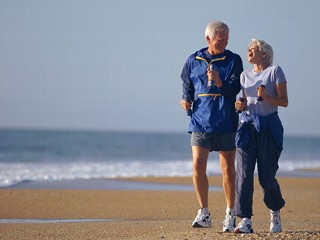 The American College of Sports Medicine “is the largest sports medicine and exercise science organization in the world.” The group was established in 1954 and “is dedicated to advancing and integrating scientific research to provide educational and practical applications of exercise science and sports medicine.” (click here for reference) Among the initiatives of the ACSM is the “Exercise Is Medicine” program to promote physical activity for preventing disease and improving health.
The American College of Sports Medicine “is the largest sports medicine and exercise science organization in the world.” The group was established in 1954 and “is dedicated to advancing and integrating scientific research to provide educational and practical applications of exercise science and sports medicine.” (click here for reference) Among the initiatives of the ACSM is the “Exercise Is Medicine” program to promote physical activity for preventing disease and improving health.
The ACSM has an ongoing effort to review relevant research and modify its guidelines for quantity and quality of physical activity and exercise. These guidelines cover people of all ages and abilities as well as people with disabilities. Dr. Carol Ewing Garber, chair of the writing committee, said:
The scientific evidence we reviewed is indisputable. When it comes to exercise,
the benefits far outweigh the risks. A program of regular exercise – beyond the
activities of daily living – is essential for most adults. It is no longer enough to
consider whether an individual engages in adequate amounts of weekly exercise.
We also need to determine how much time a person spends in sedentary
pursuits, like watching television or working at a computer.
Here are the basic recommendations for adults up to age 65:
Cardiorespiratory Exercise
- Adults should get at least 150 minutes of moderate-intensity exercise per week.
- Exercise recommendations can be met through 30-60 minutes of moderate-intensity exercise (five days per week) or 20-60 minutes of vigorous-intensity exercise (three days per week).
- One continuous session and multiple shorter sessions (of at least 10 minutes) are both acceptable to accumulate desired amount of daily exercise.
- Gradual progression of exercise time, frequency and intensity is recommended for best adherence and least injury risk.
- People unable to meet these minimums can still benefit from some activity.
Resistance Exercise
- Adults should train each major muscle group two or three days each week using a variety of exercises and equipment.
- Very light or light intensity is best for older persons or previously sedentary adults starting exercise.
- Two to four sets of each exercise will help adults improve strength and power.
- For each exercise, 8-12 repetitions improve strength and power, 10-15 repetitions improve strength in middle-age and older persons starting exercise, and 15-20 repetitions improve muscular endurance.
- Adults should wait at least 48 hours between resistance training sessions.
Flexibility Exercise
- Adults should do flexibility exercises at least two or three days each week to improve range of motion.
- Each stretch should be held for 10-30 seconds to the point of tightness or slight discomfort.
- Repeat each stretch two to four times, accumulating 60 seconds per stretch.
- Static, dynamic, ballistic and PNF stretches are all effective.
- Flexibility exercise is most effective when the muscle is warm. Try light aerobic activity or a hot bath to warm the muscles before stretching.
Neuromotor Exercise
- Neuromotor exercise (sometimes called “functional fitness training”) is recommended for two or three days per week.
- Exercises should involve motor skills (balance, agility, coordination and gait), proprioceptive exercise training and multifaceted activities (tai ji and yoga) to improve physical function and prevent falls in older adults.
- 20-30 minutes per day is appropriate for neuromotor exercise.
Stay tuned as the next few blogs will parse these guidelines!
Leave a Reply